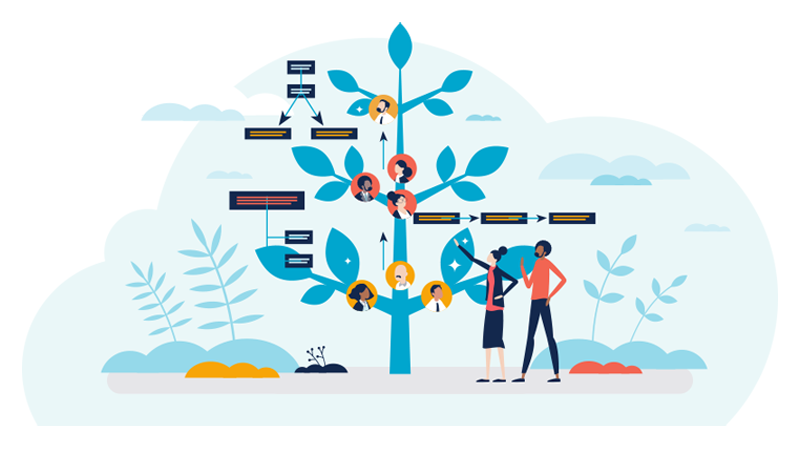
A few weeks ago, our team met with the owner of a successful personal injury firm. We were mapping out his operational bottlenecks when he paused and asked a question I’ve heard a few times now: “With all this new AI technology, do I even need a service like Vista? Won’t these tools just fix my processes for me?”
It’s a fair question. The legal world is buzzing with talk of artificial intelligence, and it’s easy to view these new tools as a silver bullet for every challenge a firm faces. Every day, it seems a new AI product launches, promising to revolutionize document review, draft demands, and even predict case outcomes. The hype can make it feel like human expertise and process improvement are becoming obsolete.
After three decades assisting all types of businesses and 15 years specifically working with plaintiff law firms in optimizing their operations, I see it much differently. I don’t view AI as a competitor... I see it as a powerful accelerator. These tools can offer incredible efficiencies, but they are not a replacement for human thought, strategic direction, or sound operational processes. AI is a powerful engine, but you still need a skilled driver, a clear map, and a well-maintained vehicle to get where you want to go. The firms that will thrive in this new era are not the ones that blindly adopt every new tool, but those that thoughtfully integrate the right tools into an already solid foundation. And… if you are familiar with Jim Collins’ seminal book, Good to Great, you may recognize these thoughts on technology that Collins captured as one of the seven characteristics of the good-to-great companies. Great companies avoid technology fads and focus solely on technology that can accelerate the momentum the company already possesses.
The most common mistake I see firm owners make is viewing AI as a solution in itself. They believe that by simply subscribing to a new AI platform, their deep-seated operational problems will magically disappear. In reality, AI is a tool, and like any tool, its effectiveness depends entirely on the skill and strategy of the person using it. Giving a powerful tool to an untrained user without a plan doesn’t create efficiency; it creates chaos, faster.
Think of it this way: AI can draft an email in seconds, but it can’t understand the nuance of that client’s emotional state after a traumatic injury. That requires human intellect, empathy, and experience. AI excels at executing defined tasks at scale. It can process data, identify patterns, and generate content based on the instructions it’s given. It is an accelerator of tasks.
However, it cannot replicate the uniquely fine human skills that define a great attorney or team member: critical thinking, strategic judgment, ethical reasoning, and the ability to build a relationship of trust with a client. AI doesn't have a gut feeling about someone’s credibility. It doesn’t understand your firm's culture or your long-term vision.
When you try to use AI to replace human thought, you are abdicating your most valuable role as a firm owner and a legal strategist. The real opportunity lies in using AI to accelerate the mundane, freeing up your team’s time and mental energy to focus on the high-value work that only humans can do.
The market for legal AI tools has exploded. It can feel overwhelming to sort through the noise and figure out which solutions are genuinely useful and which are just well-marketed vaporware. I’ve seen firms get so caught up in the fear of missing out that they subscribe to multiple overlapping services, creating more complexity instead of less.
It’s also important to recognize that this boom is likely to be followed by a period of consolidation. Just like in the early days of the internet, many of these startups will eventually be acquired or will fail. The last thing you want is to build a critical firm process around a tool that disappears in two years.
So, how do you choose wisely?
Implementing an AI tool is not a "set it and forget it" activity. Your greatest asset is your team, and their ability to use these new tools responsibly will determine your success. Without clear direction, you risk inconsistent work product, ethical missteps, and a loss of the very efficiency you were hoping to gain.
This starts with creating a firm-wide policy for the responsible use of AI. This policy should be a living document, but it must establish clear guardrails. For instance, it should explicitly state that all AI-generated content, whether it's a legal brief, a client communication, or a marketing blog, must be reviewed, edited, and verified by a human before it is used. It should remind your team of their ethical obligations regarding client confidentiality.
Next, you need to provide training that goes beyond which buttons to click. Your team needs to learn how to write effective prompts, how to critically evaluate AI outputs, and how to spot potential "hallucinations" or inaccuracies. They need to understand that the goal is not to have the AI do their work for them, but to use it as a starting point to produce better work, faster.
Cultivate a culture of curiosity, not fear. Some team members may worry that AI is coming for their jobs. It’s your role as a leader to frame this technology as an assistant that will free them from tedious tasks, allowing them to focus on more strategic and fulfilling work. Encourage them to experiment, share what they’re learning, and find new ways to leverage these tools to improve their daily workflows.
This brings me back to the question that started this conversation. Where does a service like Vista fit into an AI-powered world? I know it may sound self-serving, yet our role becomes more critical than ever. We don't sell AI tools; we help you build the operational foundation that allows you to leverage them effectively.
Before you can accelerate your processes, you must have clear, defined processes. We work with firms to map out their existing workflows, identify the real bottlenecks, and streamline their operations from the ground up. We help you build a well-maintained vehicle and provide the critical roadmap. Only then can you decide when and where to install the AI “aftermarket add-ons” for maximum impact.
We help you answer the foundational questions:
By focusing on the holistic system first, you avoid the trap of using technology to pave over a broken process. We provide the strategic oversight to ensure you’re choosing the right tools for the right problems and integrating them in a way that truly boosts your firm’s efficiency and profitability. We help you build the human-centric systems that AI can then accelerate.
The rise of AI is not something to fear, but it does demand thoughtful leadership. It’s an opportunity to redefine how your firm operates and to empower your team to achieve new levels of productivity and professional satisfaction.
Start by looking inward. Conduct an honest assessment of your firm’s current processes. Where are the true bottlenecks? Where does your team spend time on low-value, repetitive tasks? This analysis will give you the map you need to navigate the AI landscape.
Then, start the conversation with your team. Create a space for open dialogue about how AI can support their work. Your people on the front lines often have the best insights into where these tools can make a real difference.
Finally, don’t try to do it all at once or all alone. Pick one or two key processes to focus on. Find a trusted partner who can provide an objective, expert perspective on your operations and help you build a strategy that puts your people and your processes first.
AI is here to stay, and its capabilities will only continue to grow. But the future of law will not be built on algorithms alone. It will be built by forward-thinking leaders who understand how to combine the power of technology with the irreplaceable value of human intellect, empathy, and judgment. Your greatest challenge... and your greatest opportunity... is to become one of those leaders.



